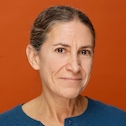A small slice of a breast cancer tumor, removed from a patient the day before, lay in a dish. Virangika Wimalasena, a Johns Hopkins University graduate student, would soon begin chopping and mixing it with an enzyme solution in a tube.
From here it would go into a machine to be warmed and shaken, a process to further reduce the mass to its basic cellular parts before being examined under high-powered microscopes.
These are the first steps in the process of learning what could give this cancer the ability to evade the body’s defenses, travel to new organs and become far more deadly.
“Cancer is most dangerous when the disease has spread to many parts of the body, and conventional treatments are not effective enough for patients with metastatic disease,” said Andrew Ewald, director of the Department of Cell Biology in Hopkins’ School of Medicine.
Hopkins officials announced Wednesday that scientists led by Ewald have received a $35 million grant to accelerate their work to understand why and how cancer spreads, or metastasizes, and to do something about it.
Ewald said they will “look for common ground among all types of cancers” and will pull in experts from several areas of Hopkins.
About 2 million people are expected to be diagnosed with cancer this year and close to 610,000 will die, according to the National Cancer Institute. Cancers of the lung, colon, pancreas, breast and prostate lead the pack, and together all the cancers are the nation’s second leading killer behind heart disease.
Metastasis, or when tumors spread to other parts of the body, is likely behind the majority of cancer deaths. Once breast cancer, for example, reaches distant organs, it’s still considered breast cancer, but at a later stage where it can be far more complicated to treat.
Therapies can often slow progress and extend patients’ lives, especially newer treatments such as immunotherapies that harness a person’s immune system to target the cancer. But they don’t work for everyone or all types of cancers, and many people with metastatic cancer can no longer be cured.
This is what scientists hope to change by learning more about how cancer spreads, how to stop the spread and how to treat the cancer.
The grant will fund a new institute, named for the donor, Baltimore native Theodore Giovanis, who works in health care finance and insurance regulation and is a professional sports car driver and team owner.
Giovanis formed the Jayne Koskinas Ted Giovanis Foundation for Health and Policy to honor his late wife, who died from metastatic breast cancer in 2010. He also joined the advisory board for the Johns Hopkins Institute for Basic Biomedical Sciences and has previously funded Hopkins research.
“I think of myself as someone who wants to make a difference,” he said in a statement. “And I can leverage the work of my foundation to a much broader and more impactful scale by providing this gift to Johns Hopkins.”
The new Giovanis Institute for Translational Cell Biology will be located on the Hopkins East Baltimore medical campus within the Department of Cell Biology.
The funds will go to scientists in Ewald’s lab and around the university who do basic biological research or work in other areas, such as physics, engineering and computational medicine. They may use data to better predict whose cancer will spread. Doctors could help translate the information more quickly to the bedside, said Ewald, also co-leader of the Cancer Invasion and Metastasis Program at the Johns Hopkins Kimmel Cancer Center.
If they are able to keep the cells within an organ, “They are highly treatable,” he said. With a few exceptions for brain and pancreatic cancer, patients are often able to have surgery to remove a tumor, and follow up with chemotherapy and radiation to destroy lingering cells.
“It gets scary for patients when it spreads,” Ewald said. “That’s when it’s life threatening.”
For now, the scientists are still hoping to learn why some cancer cells, which are not normally good at evading the body’s natural defenses, don’t die when they leave the first organ or when they are circulating in the body or entering and growing in another organ.
Ewald likened the multistep process to a decathlon, the three-day Olympic sport involving 10 different events. Participants use different tools to win each event, he said, but if there is an injury or failure at one turn, “you don’t win the decathlon,” Ewald said.
Understanding this process more thoroughly is of interest to doctors on the front lines, who don’t know which cancers will spread and which won’t, said Dr. William Dahut, chief scientific officer at the American Cancer Society.
“For colorectal, lung and breast cancer particularly, we give many more patients adjuvant therapy to block the spread than would benefit from it,” he said, referring to extra treatment. “We hope we can stop spread but we end up over-treating some patients.”
What doctors have learned is that certain cancers are more likely to spread to specific destinations, like prostate cancer may end up in bones but not the brain. A lot of other factors also play a role, such as the specifics of the tumor, the tumor location and genetics. But even with more of that information, and the extra care, they can’t always stop the spread.
“They are asking important questions; we’ve not made nearly the gains we’d hoped to date,” at Hopkins, Dahut said.
“The lab research is going to allow us to focus on new strategies,” he said. “The faster we can get to clinical trials, trials in patients, the better.”




Comments
Welcome to The Banner's subscriber-only commenting community. Please review our community guidelines.